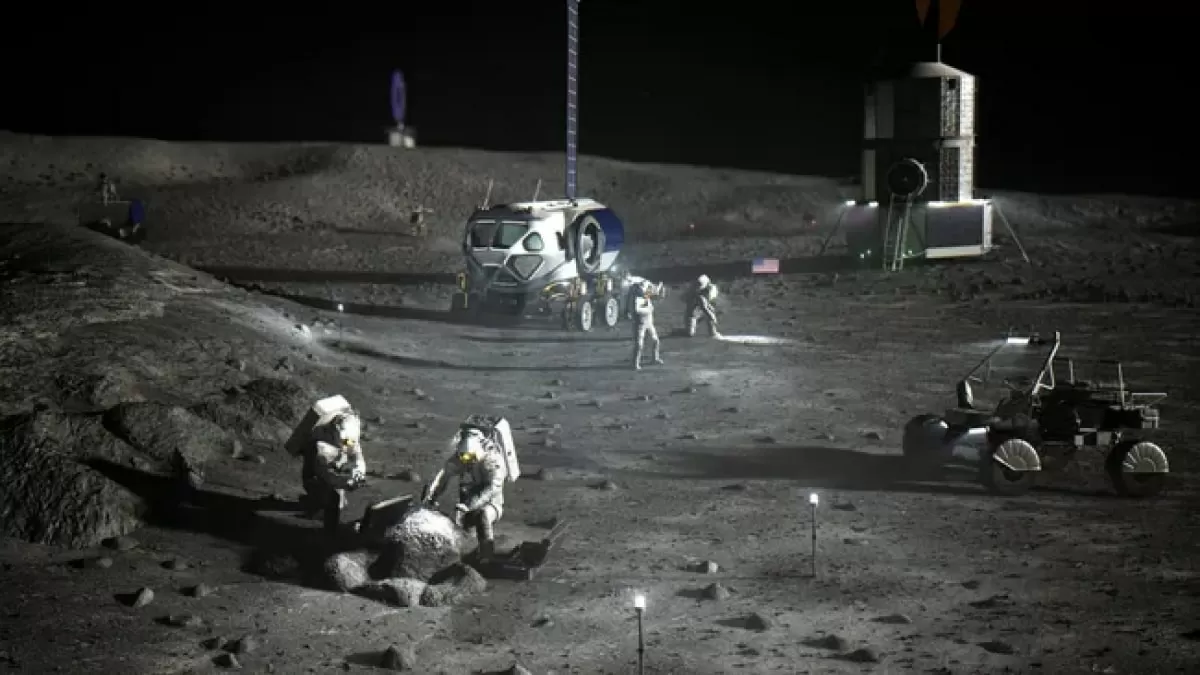India has always been at the forefront of space exploration, with a rich history of successful space missions. From launching satellites into orbit to sending probes to Mars, India has continuously showcased its capabilities in the field of space research and technology. And now, the country has set its sights even higher with an ambitious goal to build a moon-orbiting space station by 2040.
This announcement by the Indian Space Research Organisation (ISRO) marks a major step in the country’s space exploration efforts. The proposed space station will not only support crewed lunar missions but also serve as a hub for scientific research, making India a key player in the global space race.
This plan follows India’s successful robotic missions, including the Chandrayaan-3, which made the country the fourth in the world to land on the moon. The previous Chandrayaan missions, Chandrayaan-1 and Chandrayaan-2, have already achieved significant milestones, with the latter even having a lander and rover on the lunar surface.
The proposed space station will be an extension of India’s lunar exploration program and will provide a major boost to the country’s space technology and research capabilities. It will be a modular structure, built in orbit around the moon, and will be capable of sustaining human life for extended periods.
The primary objective of the space station is to support crewed missions to the moon and other deep space missions in the future. It will serve as a rendezvous point for astronauts to stay and conduct experiments while on their journey to the moon. This will drastically reduce the time and resources needed for such missions, making India a leader in space exploration.
Apart from being a launchpad for crewed missions, the space station will also serve as a research laboratory. It will provide a unique platform for scientists to conduct experiments in a microgravity environment, enabling groundbreaking discoveries in various fields of science and technology. The station will also serve as a communication hub, facilitating communication between Earth and other space missions.
The construction of such a complex structure in orbit around the moon is no easy feat, but India has proven time and again its capability to take on such challenges. The country has already developed and tested crucial technologies required for the space station, such as the GSLV Mk III launch vehicle and the reusable space capsule.
The success of India’s Chandrayaan missions and the development of these technologies have solidified the country’s position as a major player in the global space arena. With the proposed space station, India is now taking a giant leap towards becoming a space superpower.
The country’s space program has always been a symbol of its scientific and technological prowess, and the space station will further enhance this image on the global stage. It will also open up new opportunities for collaborations with other space-faring nations, allowing for the exchange of knowledge and resources.
The space station project is not just about India’s advancements in space technology; it is also a reflection of the country’s determination to push the boundaries of what is possible. It is a testament to the hard work and dedication of the scientists and researchers at ISRO, who have continuously strived to make India a leader in space exploration.
Moreover, the space station project is a significant step towards fulfilling the vision of Prime Minister Narendra Modi’s ‘New India.’ It aligns with the country’s goal of becoming self-reliant in all sectors, including space technology. The development of such a complex structure in space will require the use of indigenous technology and resources, further contributing to the country’s growth and progress.
The proposed timeline of 2040 for the completion of the space station may seem far away, but it is a necessary and achievable goal. It will require a sustained effort from ISRO and the whole nation to make this dream a reality. But the benefits of this project will be far-reaching, not just for India but for the entire world.
In conclusion, India’s ambitious goal to build a moon-orbiting space station is a significant milestone in the country’s space exploration journey. It will not only support crewed missions and scientific research but also elevate India’s status as a global leader in space technology. With its determination, expertise, and resources, India is well on its way towards achieving this goal and making its mark in the history of space exploration.

